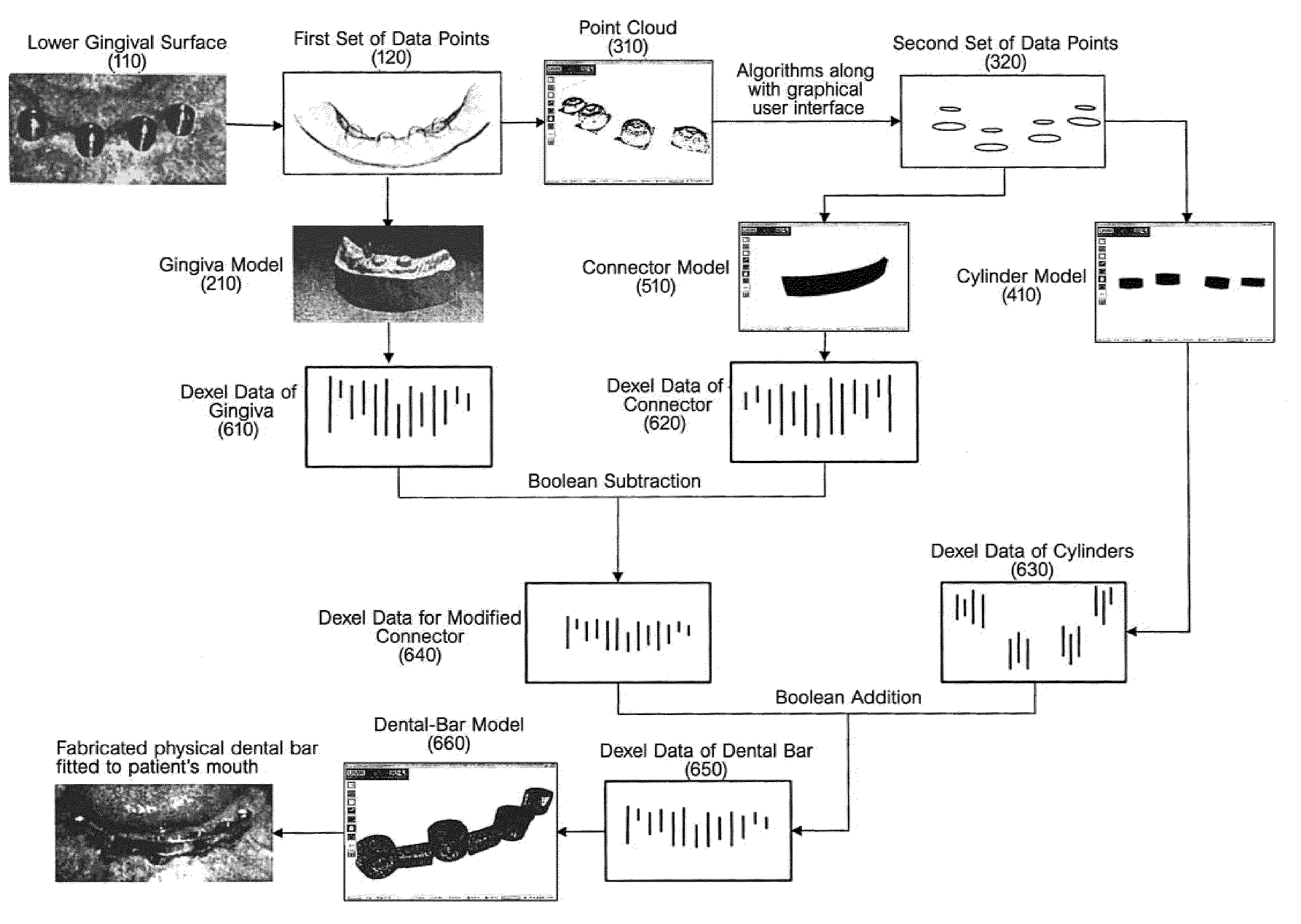Computer aided dental bar design
a dental bar and computer technology, applied in the field of dental bar design, can solve the problems of long and laborious process, high level of artistic work on the part of dentists, and the development of the method and system of automatic design and fabrication of dental bars
- Summary
- Abstract
- Description
- Claims
- Application Information
AI Technical Summary
Benefits of technology
Problems solved by technology
Method used
Image
Examples
Embodiment Construction
[0019]The present invention provides an automated method of dental-bar design for implant-based dental restorations, which can be used for partially or completely edentulous patients. The inventive method takes a set of digital scan data that represents a patient's gingival surface (of either the upper or lower jaw) and designs a patient-specific dental bar in the form of a triangular-mesh model, which can then be used to fabricate a physical dental bar by computer-aided manufacturing. Specifically, the inventive method to design a dental bar for a patient comprises the following steps:[0020]a. Retrieving a first set of data points representing the patient's gingival surface (upper or lower) with pre-implanted healing abutments (100);[0021]b. Constructing a geometric model for the gingiva (Gingiva Model) from the first set of data points (200);[0022]c. Computing a second set of data points representing positions and orientations of the abutments (and hence the implants) from the fir...
PUM
 Login to View More
Login to View More Abstract
Description
Claims
Application Information
 Login to View More
Login to View More - R&D
- Intellectual Property
- Life Sciences
- Materials
- Tech Scout
- Unparalleled Data Quality
- Higher Quality Content
- 60% Fewer Hallucinations
Browse by: Latest US Patents, China's latest patents, Technical Efficacy Thesaurus, Application Domain, Technology Topic, Popular Technical Reports.
© 2025 PatSnap. All rights reserved.Legal|Privacy policy|Modern Slavery Act Transparency Statement|Sitemap|About US| Contact US: help@patsnap.com



